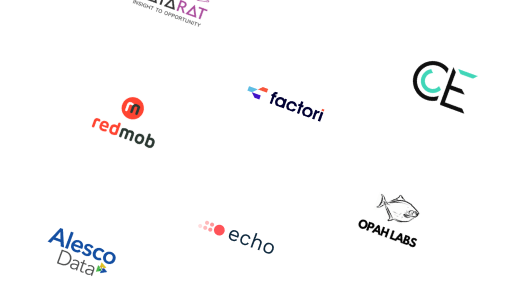What is Foreclosure Data? Examples, Uses & Datasets

- Overview
- Datasets
- Attributes
- Guide
- FAQ
- Overview
- Datasets
- Attributes
- Guide
- FAQ
What is Foreclosure Data?
Foreclosure data refers to information about properties that are in the process of being repossessed by lenders due to the homeowner’s inability to make mortgage payments. This data includes details such as property addresses, auction dates, outstanding loan amounts, and lender information. Foreclosure data is crucial for real estate investors and analysts to identify distressed properties, evaluate investment opportunities, and assess market trends.
Best Foreclosure Databases & Datasets
Here is our curated selection of top Foreclosure Data sources. We focus on key factors such as data reliability, accuracy, and flexibility to meet diverse use-case requirements. These datasets are provided by trusted providers known for delivering high-quality, up-to-date information.

US National Foreclosure Data | Pre-Foreclosure Data | 23M+ Records | Property Market Data

Foreclosure Data | USA Coverage | 74% Right Party Contact Rate | BatchData

Real Estate Data | Property Listing, Sold Properties, Rankings, Agent Datasets | Global Coverage | For Competitive Property Pricing and Investment

Federal Tax Lien Data | IRS Tax Lien Data | Unsecured Liens | Bulk + API | 25,000 New IRS Liens per Year

Think Data Group |Commercial Real Estate Data|Realeflow Data|120MM+ Property Records|136B+ Data Points|Updated Monthly|Homes likely to sell in 90 days

Residential Real Estate Data | USA Coverage | 74% Right Party Contact Rate | BatchData

Grepsr | Real Estate Products, Property Listing, Sold Properties, Rankings, Agent Datasets | Middle East Coverage with Custom and On-demand Datasets

Residential Real Estate Data | Assessor & Recorder of Deeds Data | Bulk + API | 158M Properties

Property Data via API | USA Coverage | 74% Right Party Contact Rate | BatchData

Donuka: Washington, D.C. Property Data
Can't find the data you're looking for?
Let data providers come to you by posting your request
Post your request
Main Attributes of Foreclosure Data
Below, we outline the most popular attributes associated with this type of data—features that data buyers are actively seeking to meet their needs.
| Attribute | Type | Description | Action |
|---|---|---|---|
| String | The address of a company or contact (street name, number, zip code, city, county, country). | View 114 datasets | |
| String | The name of a neighborhood. | View 112 datasets | |
| String | The name of a city district. | View 110 datasets | |
| String | The type of land, e.g. agricultural, commercial, recreational, residential, or transport. | View 109 datasets | |
| String | The land zoning type. | View 109 datasets | |
| Float | The latitude of a point on earth's surface. Commonly abbreviated as "lat". | View 9 datasets |
What are Examples of Foreclosure Data?
Examples of foreclosure data include lists of foreclosed properties, auction schedules, details of bank-owned properties, and pre-foreclosure notices. This data helps investors find properties that may be purchased at a discount, analyze trends in foreclosure rates, and identify potential risks.
Foreclosure Data Attributes
- Property Details: Addresses, property type, and size of foreclosed homes.
- Loan Information: Outstanding loan amounts and mortgage data.
- Auction Data: Dates, locations, and terms of foreclosure auctions.
- Ownership Status: Information on bank-owned or real estate-owned (REO) properties.
- Legal Filings: Notices of default, foreclosure filings, and legal proceedings.
How is Foreclosure Data Collected?
Foreclosure data is collected from public records, government agencies, real estate listings, and financial institutions. This real-estate data providers aggregate information from county courthouses, online databases, and lender filings to create foreclosure lists. Advanced analytics tools are used to analyze this data, providing insights into market trends and opportunities for investment.
Why is Foreclosure Data Important?
Foreclosure data is important because it offers valuable insights into the real estate market, helping investors identify distressed properties with investment potential. By analyzing foreclosure data, stakeholders can understand market conditions, assess risks, and make informed decisions.
Foreclosure Data Use Cases
- Real Estate Investment: Identifying undervalued properties for purchase and rehabilitation.
- Market Analysis: Understanding trends in foreclosure rates and market conditions.
- Risk Assessment: Evaluating the impact of foreclosures on property values and neighborhoods.
- Lending Decisions: Informing mortgage lenders about potential risks in their loan portfolios.
Frequently Asked Questions
How is the Quality of Foreclosure Data Maintained?
The quality of Foreclosure Data is ensured through rigorous validation processes, such as cross-referencing with reliable sources, monitoring accuracy rates, and filtering out inconsistencies. High-quality datasets often report match rates, regular updates, and adherence to industry standards.
How Frequently is Foreclosure Data Updated?
The update frequency for Foreclosure Data varies by provider and dataset. Some datasets are refreshed daily or weekly, while others update less frequently. When evaluating options, ensure you select a dataset with a frequency that suits your specific use case.
Is Foreclosure Data Secure?
The security of Foreclosure Data is prioritized through compliance with industry standards, including encryption, anonymization, and secure delivery methods like SFTP and APIs. At Datarade, we enforce strict policies, requiring all our providers to adhere to regulations such as GDPR, CCPA, and other relevant data protection standards.
How is Foreclosure Data Delivered?
Foreclosure Data can be delivered in formats such as CSV, JSON, XML, or via APIs, enabling seamless integration into your systems. Delivery frequencies range from real-time updates to scheduled intervals (daily, weekly, monthly, or on-demand). Choose datasets that align with your preferred delivery method and system compatibility for Foreclosure Data.
How Much Does Foreclosure Data Cost?
The cost of Foreclosure Data depends on factors like the datasets size, scope, update frequency, and customization level. Pricing models may include one-off purchases, monthly or yearly subscriptions, or usage-based fees. Many providers offer free samples, allowing you to evaluate the suitability of Foreclosure Data for your needs.

